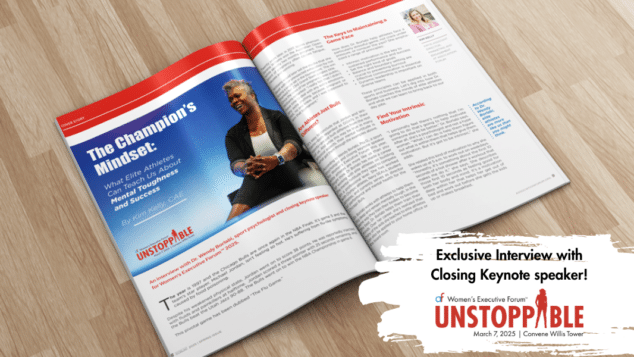Agility & Associations

Agile organizations are outpacing and out-earning those that adhere to traditional business models. “When pressure is applied, the agile organization reacts by being more than just robust; performance actually improves as more pressure is exerted,” reads a 2018 report by McKinsey & Company entitled “The five trademarks of agile organizations.”
The findings are incredible, considering the amount of pressure that’s been applied to all organizations over the past few years. But what does it mean for an organization to be agile? Where has all the buzz over agility come from and how can it be applied to mission-based work?
Agility refers to organizations that can quickly and efficiently respond to disruption, but the term has deep roots in the tech industry. Born out of Agile Development, a movement in software engineering, agility revolved around people-centered cultures, rapid learning, and fast decisions cycles.
Agility refers to organizations that can quickly and efficiently respond to disruption, but the term has deep roots in the tech industry. Born out of Agile Development, a movement in software engineering, agility revolved around people-centered cultures, rapid learning, and fast decisions cycles. This business model stands in stark contrast to traditional organizational design, what McKinsey calls “static, siloed, structural hierarchy.”
For most of the 20th Century, hierarchical business structures were status quo and meant to optimize labor, quality control, and project management. Businesses were run like machines, with top-down management and the assumption that employees needed to be told what to do so that the organization didn’t descend into chaos. This is what many refer to as The Management Century.
Today, many organizations still operate with a structure leftover from The Management Century. But discontent with this model has been brewing for some time. As technology leapt forward and a digital age was ushered in, workers and leaders alike became uneasy in the hierarchal and stoic system of old.
How Software Developers Challenged the Organizational Paradigm
“Our highest priority is to satisfy the customer through early and continuous delivery of valuable software.”
-Principle #1, Agile Manifesto
In the mid-1990s, software professionals had become frustrated with the development process. Many developers felt micro-managed and constrained by the rules and red tape that govern a linear model for product development (I.e., organizational machines). By 2001, 17 professionals met in Utah to find an alternative approach to the existing model and founded the Agile Alliance. They wrote a manifesto and today Agile Methodology is widely used in the tech industry.
“The easiest way to think about it is to look at what it replaced, which was really detailed specification documents that went into a ton of detail to plan out exactly what you’re going to build, and then you would build it, and then you would test it, and then you would get into production and eventually you would get feedback on whether people liked it or not and if it was useful,” says Dan Langevin, Co-Founder and Chief Technology Officer at Ideon, a software company in the healthcare technology space.
The problem with the old model, Langevin explains, is that it’s extremely expensive to build software and sometimes you get to the feedback stage and realize you built the wrong thing. “The idea behind Agile is that you should build the smallest possible thing that you can and put the least amount of effort that you can to get it into the hands of users and start the feedback cycle,” he says.
Langevin explains that the ethos of Agile Development is hypothesis testing and incremental learning. “I think it started with software because it’s very hard as a user to imagine what interacting with it is going to be like without touching it,” he says. He goes on to explain that the area of software design is uncharted territory. “You could kind of build anything and you don’t know whether it will work in the end or not,” he adds.
So, if you are building products never before seen or even imagined by users and you’re not sure if the features will be viable, how do you proceed? In Agile, you build what’s called the minimal viable product (MVP) and you test it. You gather feedback, you hypothesize some more, you build some more, and you test it again.
“If I had to boil down Agile to one thing,” Langevin says, “it’s really that you should think of everything you do as an experiment and try to prove, or disprove your hypothesis and gather data.” When asked about non-development areas of Ideon’s business, Langevin says Agile still comes into play. Ideon’s marketing team tests campaigns, gathers data, and adjusts strategy. Ideon also incorporates scrum ceremonies (an Agile term) into other teams. These include retrospectives, in which the team gathers at the end of a cycle and talks about what went well and what didn’t go well and develop action items to improve the process for the next time around.
Langevin says he believes that the core idea behind Agile Methodology, experimentation and incremental learning, can be applied to virtually any business. “I think that it’s applicable really anywhere. And then how you implement it is going to be pretty different depending on what you’re trying to actually achieve,” he says.
So, how do you implement elements of Agile Methodology if you’re doing mission-based work?
Mission-based Organizations Strive for Agility
“Welcome changing requirements, even late in development. Agile processes harness change for the customer’s competitive advantage.”
-Principle #2, Agile Manifesto
Tim Hopkins absolutely believes associations can be agile. Hopkins is a practice director at McKinley Advisors and co-led a pre-conference session at the 2022 ASAE Annual Meeting & Exposition titled “The Agile Association Master Class”. The three-hour workshop drew from Agile Methodology and used real association examples to guide participants through the nuances of becoming an agile organization.
“I call it uppercase ‘A’ Agile,” says Hopkins. He’s referring to the official methodology deployed by businesses such as Ideon. “You don’t necessarily have to hire outside people to be more lowercase ‘a’ agile,” he says, adding “it’s a trait, not a methodology.”
While Hopkins notes that an organization doesn’t need to hire outside help to start incorporating agile methodologies, it is certainly part of what he does at McKinley Advisors. Before he consulted on using agile in association work, he was an association professional trying to find ways to get results.
Hopkins became interested in Agile while leading the digital center and diversity, equity, and inclusion efforts for the International Association of Fire Chiefs (IAFC). He wanted to measure outcomes rather than outputs. The organization was doing all sorts of things to promote diversity, but they needed to measure the right things to see if their programs were affecting outcomes. Was the organization actually becoming more diverse? This desire to measure outcomes led him to objectives and key results, or OKRs.
“OKRs are a superpower,” Hopkins says. He sees OKRs as a way associations can start to pull the principles of Agile into the fabric of their organizations. Not only is this way of thinking integral for measuring impact, but it also promotes efficiency. If your outputs are not influencing desired outcomes, you can shift resources to areas that are more effective.
Hopkins also talks about MVPs, the minimal viable product that Langevin uses with his development teams. While most associations aren’t deploying products (events, education, content, etc.) at the same rate a software development company might, the MVP can still help hone features and member satisfaction.
Plus, Hopkins sees another use for the MVP. If this is your first time dipping a toe into the waters of Agile, you may be thinking this all sounds great, but you’ll never get your team on board for myriad reasons. Hopkins suggests executing an MVP as a test of the methodology.
“Come up with a concept, a theory; something you feel comfortable enough to run with given the level of support you have in an organization,” he says. He notes that one of the things that holds people back is a lack of psychological support for trying new things. The idea behind Agile is rapid learning, which will require room to fail and learn from those failures. “If your hypothesis turns out not to be true, it can be a good thing,” Hopkins says, adding, “You did it at a measurable scale, risk was mitigated. Yes, it failed by way of definition. However, you learned something so valuable that the next version will be better for it.”
The Culture of Agility
“Build projects around motivated individuals. Give them the environment and support they need, and trust them to get the job done.”
Principle #5, Agile Manifesto
First, work moved to a much more remote model following the COVID-19 pandemic, and now Agile Methodology demands that leaders also trust employees to get the job done. Both ideas fly in the face of the old paradigm. The Management Century mandated work be done in offices, in business clothes, and that managers tell subordinates how to do it. While this may be an oversimplification, we’ve all seen enough org charts to know that the hierarchical nature of business hasn’t changed much, until now.
Hopkins says that people are right to push back against new methodologies, and especially buzzwords that claim to make an organization faster, stronger, and better. “I think there’s nothing that shows progress better than the results of progress,” he says.
McKinsey likens the shift in thinking of organizations as machines to thinking of them as organisms. Agile organizations are more like organisms because they are made up of cells, or small teams of people, that can quickly adapt and be flexible with resources. But this doesn’t mean that there isn’t still an important leadership component to agile companies.
In addition to building psychological safety for experimentation and potential failure, leaders who want to improve agility need to trust their people. McKinsey likens the shift in thinking of organizations as machines to thinking of them as organisms. Agile organizations are more like organisms because they are made up of cells, or small teams of people, that can quickly adapt and be flexible with resources. But this doesn’t mean that there isn’t still an important leadership component to agile companies.
“The paradox that truly agile organizations master [is that] they are both stable and dynamic at the same time,” the report reads. “They design stable backbone elements that evolve slowly and support dynamic capabilities that can adapt quickly to new challenges and opportunities.”
The “stable backbone” the McKinsey report refers to is comprised of elements like a shared purpose and vision, cohesive community, and servant leadership. Sound familiar? Associations are already built around these elements. Furthermore, agile businesses excel due to their fierce customer focus—another trait associations know well. In this way, associations are well-poised to adapt agile traits and become more flexible and stable over time.
“Agile organizations reimagine both whom they create value for, and how they do so,” the report reads. “They are intensely customer-focused, and seek to meet diverse needs across the entire customer life cycle.”
If you’re in an association membership department, those words couldn’t ring any truer. Association Forum for example, was established in 1916. Certainly, the people Association Forum creates for have changed over the past 106 years. And our customer life cycles? Well, those can sometimes last a member’s lifetime. Membership departments everywhere are constantly tweaking and honing their benefits to meet members at every stage of their career.
In some ways, associations have to be agile in order to stand the test of time. If our organizations are going to last another 100 years, we need to adapt and change as quickly as the world we live in.
A Win for Agile Governance
“Simplicity—the art of maximizing the amount of work not done—is essential.”
Principle #10, Agile Manifesto
Who doesn’t want smoother board meetings and faster decision making? For Bryan White, executive director of the Tennis Industry Association (TIA) and Chief Growth Officer at Bostrom, reimagining TIA’s board was a must.
“It was crazy,” White says, “you just had too many seats at the table, and then there was no requirement where you even needed to be a member of the association to be on the board.” At one point, the number of board seats totaled 32, making business meetings long and decision making nearly impossible.
Besides the issue with the sheer size of the board, White explained that the makeup wasn’t exactly fair. The TIA represents the business of tennis, meaning there were major manufacturers paying the association six figure sums in dues but also small independent stores that only paid hundreds of dollars. Both had representation on the board. What naturally formed was a sort of two-tiered board and it just wasn’t working.
After years of discussion and seeding the idea amongst current members, White got approval this past August to condense the board to 11 members with rotating terms. The group is still working on bylaws and pushing the plan through legal.
“Overall, I think this is going to streamline our decision-making process and how fast we can move on new initiatives,” says White. In essence, agility is closer than it has been before.
Several factors helped get the plan approved. White explains that the TIA’s main value proposition is to be the source for data and research in the industry. They supply this research to manufacturer members, the industry at large, as well as the United States Tennis Association (USTA). Yet, the previous board structure allowed past board members (from the very large board) to push the organization towards grow the game of tennis initiatives. Not only did this take resources from their research projects, White says, but it was also duplicating efforts since growing the game of tennis is a major focus of the USTA.
“They were already doing it, and doing it better,” White says, adding, “we were trying to be everything to everyone.”
When COVID-19 forced schools and offices to close in March 2020, the tennis industry saw an opportunity. People were desperate to leave the house, so outdoor recreation saw a big surge. That’s when the TIA, USTA and four other organizations formed Tennis Industry United.
White says that the organizations were looking to collaborate and pool their resources to help grow the game of tennis. The group has taken off and evolved beyond the initial pandemic meetings. They meet monthly, have programming and communications, and even put out a joint newsletter every other week.
Not only was Tennis Industry United an excellent example of industry collaboration, but it also gave former TIA board members a place to land. The mission of Tennis Industry United aligned with some of the initiatives that deviated from TIA’s research and data work. When White was proposing a plan to condense the board, he had already thought of where the extra board members could still hold a place within the industry.
“I always try to find advocates on the board and I lean on them,” White says of his role as executive director. When it came time to vote, his plan passed easily and without hurt feelings. White’s ability to straddle industry politics and organizational change is a great example of how leaders can start to shift from the old paradigm to the new.
How to Start Your Agility Journey
“At regular intervals, the team reflects on how to become more effective, then tunes and adjusts its behavior accordingly.”
Principle #12, Agile Manifesto
Where do you start? Hopkins brightens at the question and immediately suggests a book called “Brave New Work” by Aaron Dignan. “He describes this process that I really love,” Hopkins says. “It worked when I was at my old association, and it works with clients now.”
The exercise is centered around a question: What is keeping you from doing the best work of your life? Specifically, what tensions are keeping you from being more agile and achieving what you want?
“You’re basically collecting what your tensions are, be they organization-wide or in teams,” explains Hopkins. “Often, people aren’t comfortable saying tensions out loud in front of others,” he adds, “that’s one of the things with being more agile—being able to talk about tensions, out loud, together.”
Tensions can be anything, Hopkins says: For example: too much work in progress, a lack of resources in an area, or anything that’s holding the organization back. Hopkins facilitates discussions with groups to collect organizational tensions and asks the group to prioritize them by voting on what’s the biggest barrier to becoming more agile. Sometimes the tensions seem small, he says, and sometimes they’re large, like the governance issues White faced at the TIA.
Then, the group breaks down the tension and forms a hypothesis to address it within a four- or six-week period. The set period “prioritizes brain power” according to Hopkins, and it helps the team practice a key trait of agility—time limitations. You run the experiment, you collect feedback, you review and then start again.
The tensions exercise is a great way to move your organization from a permission-based organization to a constraints-based organization, Hopkins says. Again, he draws from Dignan’s book for an example. In the book, Dignan explains that permissions-based organizations are like traffic signal-controlled intersections, whereas constraints-based organizations are like roundabouts. At a traffic signal, you wait for permission to enter the intersection; you are told exactly what to do and little is left up to the driver. This is like a permissions-based organization wherein an employee needs to ask up the chain of command before completing work.
In contrast, roundabouts allow drivers to enter at their discretion and only places constraints on them. There is much more autonomy in a roundabout, allowing traffic to move quicker and adapt to the conditions of the moment.
In the U.S., we have far more traffic signals than roundabouts, but roundabouts are actually safer. According to the Insurance Institute for Highway Safety (IIHS), “The tight circle of a roundabout forces drivers to slow down, and the most severe types of intersection crashes—right-angle, left-turn and head-on collisions—are unlikely.” Furthermore, roundabouts improve traffic flow and are better for the environment since they involve less idling.
“We need more roundabouts, because that says, ‘I trust you to make the decisions,’” says Hopkins.
Bringing It All Together
Every expert I spoke to agreed on one thing: there are many ways to implement agility within an organization. Businesses are unique and seek out different opportunities while also facing unique challenges. That’s one of the reasons why it’s so fitting to think of them as organisms.
Yet, it’s clear that the old styles of management and top-down permissions-based organizational structure have run their course. McKinsey notes that “a very small number of companies have thrived over time; fewer than 10 percent of the non-financial S&P 500 companies in 1983 remained in the S&P 500 in 2013.”
Times and people change, and associations must change with them in order to stay relevant to their missions. Perhaps implementing agile principles is the way to stay relevant in the 21st Century; because The Management Century is officially over.
Tags
Related Articles
Refill Your Cup: Summer Wellness Tips for Busy Professionals
Discover simple, effective ways to recharge this summer so you can show up as your...
The Champion’s Mindset: What Elite Athletes Can Teach Us About Mental Toughness and Success
An interview with Dr. Wendy Borlabi, sport psychologist and closing keynote speaker for Women’s Executive...
Great Bosses, Greater Impact: Leadership Lessons that Stick
The best bosses leave more than instructions—they leave echoes of confidence, creativity, and leadership that...






